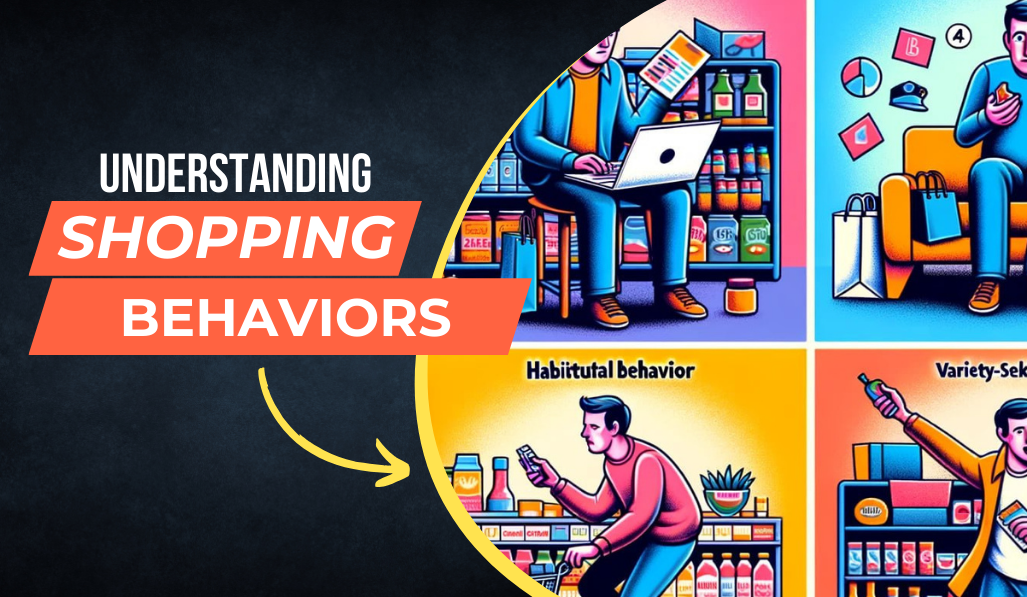Shopping behaviors are as diverse as the products lining the shelves. From meticulous planners to impulse buyers, the spectrum of consumer habits is intriguingly vast. In exploring these behaviors, researchers have identified four primary types, each with its distinct traits and influences on purchasing decisions.
Complex Shopping Behavior 🛒
These shoppers are meticulous researchers, especially when considering high-value items. They scrutinize every detail, from product specifications to reviews, before committing to a purchase.
Research Intensity is high as they invest considerable time and effort into understanding their options. Decision Speed might be slower due to the extensive research involved. Their Brand Loyalty tends to be flexible, leaning towards products or brands that consistently meet their stringent criteria.
Insights
- Research in this category extends beyond mere product features; it involves studying warranties, customer service reviews, and comparative analyses.
- Emotions play a crucial role; these consumers might experience decision paralysis if overwhelmed by options.
Case Study – Evaluating High-End Electronics
A case study involving high-end electronics, like laptops or cameras, showcases complex shopping behavior. Researchers found that consumers investing in such products extensively compare specifications, read professional reviews, and seek user feedback on forums or social media.
For instance, a consumer might meticulously examine the processing power, camera features, battery life, and customer service policies before investing in a high-end laptop.
Dissonance-Reducing Shopping 🤔
When faced with limited options or subtle differences between choices, consumers in this category make decisions swiftly. They seek to reduce any potential regret or dissatisfaction post-purchase.
Research Intensity may be moderate, focusing more on clarifying differences rather than extensive exploration. Decision Speed is high as they prioritize making a choice quickly. Brand Loyalty might fluctuate, as they are willing to switch based on minor differences that meet their needs.
Insights
- Limited options or subtle differences prompt swift decisions.
- These shoppers might seek reassurance after purchase to validate their choice.
Case Study – Selecting Basic Household Items
In scenarios where consumers need to buy staple items like toothpaste or basic kitchen supplies, the dissonance-reducing behavior emerges. With minimal differentiation between brands, these consumers swiftly choose based on price or slight variances in ingredients.
For example, a shopper might quickly select toothpaste, relying on familiar packaging or a minimal price difference between two trusted brands.
Habitual Shopping 🔄
This type of shopper relies on familiarity and routine. They stick to brands they know and trust, often without much consideration for alternatives. Research Intensity is low as they lean on past experiences and established preferences.
Decision Speed tends to be quick, as they default to their habitual choices. Brand Loyalty is high, as they consistently opt for familiar brands, making them less likely to explore other options.
Insights
- Routines and familiarity significantly influence these shoppers.
- Marketing efforts often focus on reinforcing brand loyalty.
Case Study – Brand Loyalty in Coffee
A study on habitual shopping behavior in the coffee industry revealed that consumers tend to stick to specific brands or types of coffee due to habit and preference. Even when presented with new blends or brands, habitual coffee drinkers often choose the familiar taste they’ve grown accustomed to, showcasing loyalty to a particular flavor or brand regardless of minor variations in taste or price.
Variety-Seeking Shopping 🌟
These consumers are driven by curiosity and a constant quest for novelty. They actively seek new experiences and products, often exploring different brands or items. Research Intensity may vary but could be moderate as they enjoy discovering new options.
Decision Speed might be slower as they weigh different choices to satisfy their need for variety. Brand Loyalty is relatively low, as they are more inclined to try new brands or products that catch their attention.
Insights
- These consumers actively seek novelty and diversity.
- Marketing strategies should emphasize newness and innovation to capture their attention.
Case Study – Exploring Fashion Trends
In the fashion industry, consumers exhibiting variety-seeking behavior constantly explore new styles and trends. They might switch brands frequently to embrace emerging fashion or experiment with diverse clothing styles. A consumer, known for frequently trying out different fashion brands and styles to match evolving trends, exemplifies this behavior.

The graph comparing Research Intensity, Decision Speed, and Brand Loyalty across these four shopping behaviors further illustrates the nuances within each type. It’s a spectrum where consumers may exhibit tendencies from multiple categories based on varying circumstances.
As an expert in consumer behavior, understanding these distinct shopping behaviors is key to comprehending how and why consumers make their purchasing decisions. Recognizing these patterns can significantly impact marketing strategies, product development, and overall consumer engagement.
Understanding and adapting to these behaviors can empower businesses to tailor their approaches, providing personalized experiences that resonate with different consumer segments.
By understanding these behaviors and their implications, businesses can tailor their strategies accordingly, creating targeted campaigns and product offerings that resonate with diverse consumer preferences.

